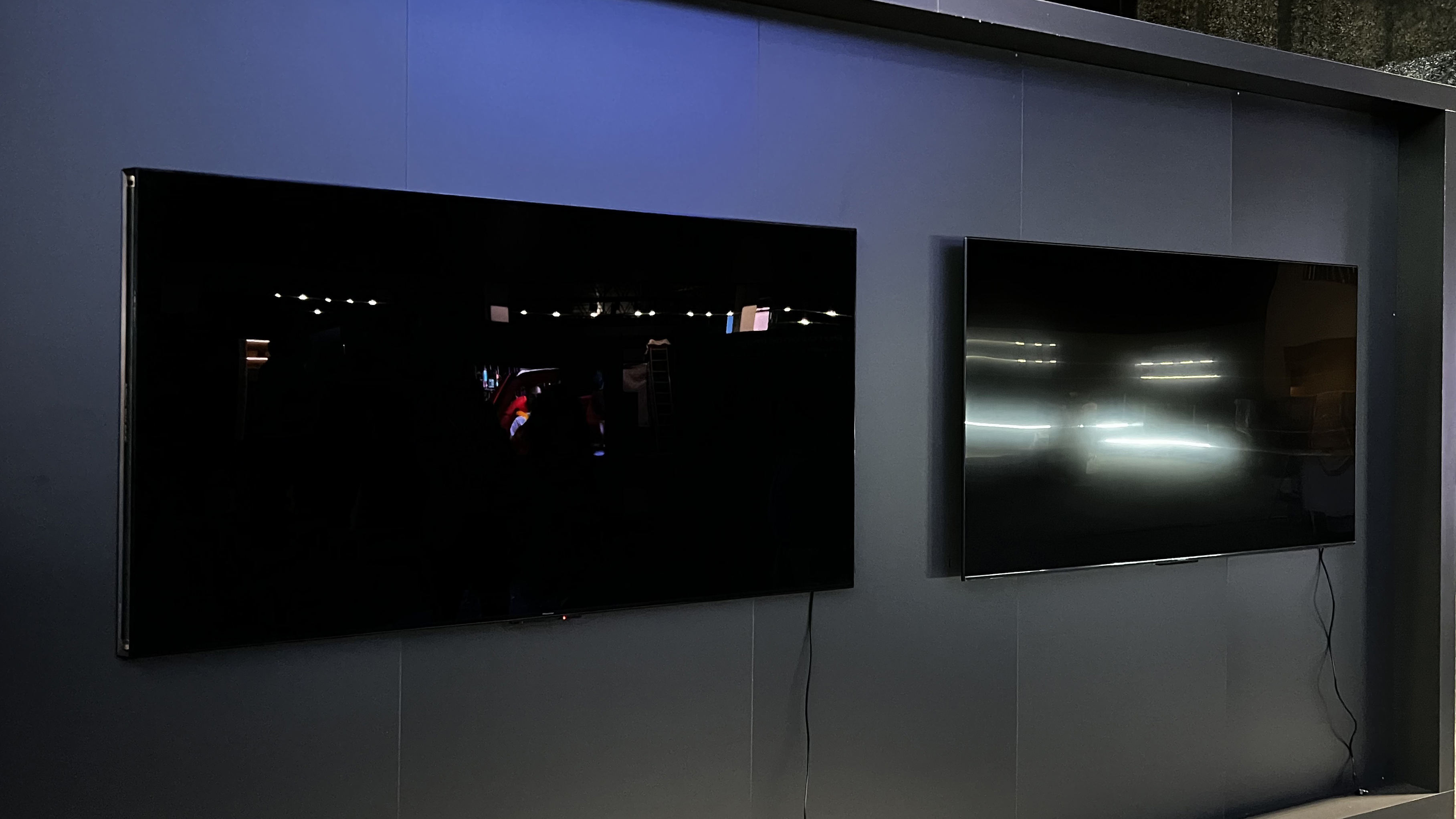Hisense's next flagship TV proves the next battle is about reflections, not brightness
Hisense's next-gen "Obsidian" panel is a sign of the future

At IFA 2023, Hisense has just shown me a prototype of its next flagship TV, to be released in 2024. Known as the UXN, it's a mini-LED model that Hisense is still working on, but is in line for a wider color gamut, more brightness and more dimming zones than any of its current TVs.
Because it's still in development, I couldn't really make any judgment on its image quality yet – but there's one feature that stood out, and that's ready to show-off: its new anti-reflection tech.
I've already seen that some high-end OLED TVs this year really benefit from a great new low-reflection polarizer known as "Vanta Black", and it makes a big difference. Normally, the best way to overcome reflections is with more brightness. If a TV's images are brighter than the reflection, you'll see what's on the screen, not the reflection.
But if you reduce the intensity of the reflections, you don't need as much brightness to overcome them. This is great for the best OLED TVs, because they have lower average brightness than mini-LED TVs, so are more susceptible to reflections.
But mini-LEDs still really benefit from reduced reflections, because their brightness is only useful in bright scenes – such as when watching sport. If you're watching a very dark scene with hard-to-make-out details, reflections are still a huge nemesis.
So it's great to see that Hisense is joining LG Display in working on a major reduction in reflections. At the top of this page, you can see the new flagship compared to the current model, to show the huge difference in the intensity of reflections. Here's a side by side of a direct, face-on view of them.

Obviously, the reflections on the new model are still very visible – but they're so much more precise. They don't spread over as much of the panel, which means they'll interrupt your viewing less.
Sign up for breaking news, reviews, opinion, top tech deals, and more.
My pictures are taken with the screen off for maximum effect. With the screen on… well, we're talking thousands of nits of peak brightness here, so it's not hard for it totally wipe away any hint of reflection in the bright scenes of Hisense's demo reel.
The TV is so bright here, you basically can't make out the frame at all because my camera had to drop the exposure so far.

We've already said that we think anti-reflection tech will be the next major leap for mid-range TVs. Using better polarizers will mean that mid-range TVs will appear brighter and clearer, without having to take a leap forward in the actual image tech – it could be the most affordable way to improve them.
So it's great to see Hisense, a company that's absolutely massive in mid-range TVs, introducing new tech in this area. Whether or when it might come to its other TVs is unclear – right now, Hisense was clear that this anti-reflection tech is a part of its "Obsidian" panel, which also includes next-gen color reproduction and improved mini-LED tech, so is a high-end proposition at first – but it's the first step.
It's hard to sell lower reflectivity in the same way that companies can boast about higher brightness or a more natural range of colors, but I think it could be the change coming to the best TVs that makes the biggest different in practise, and I can't wait to see more of how it affects the UXN's performance when it comes out in 2024.
You might also like

Matt is TechRadar's Managing Editor for Entertainment, meaning he's in charge of persuading our team of writers and reviewers to watch the latest TV shows and movies on gorgeous TVs and listen to fantastic speakers and headphones. It's a tough task, as you can imagine. Matt has over a decade of experience in tech publishing, and previously ran the TV & audio coverage for our colleagues at T3.com, and before that he edited T3 magazine. During his career, he's also contributed to places as varied as Creative Bloq, PC Gamer, PetsRadar, MacLife, and Edge. TV and movie nerdism is his speciality, and he goes to the cinema three times a week. He's always happy to explain the virtues of Dolby Vision over a drink, but he might need to use props, like he's explaining the offside rule.